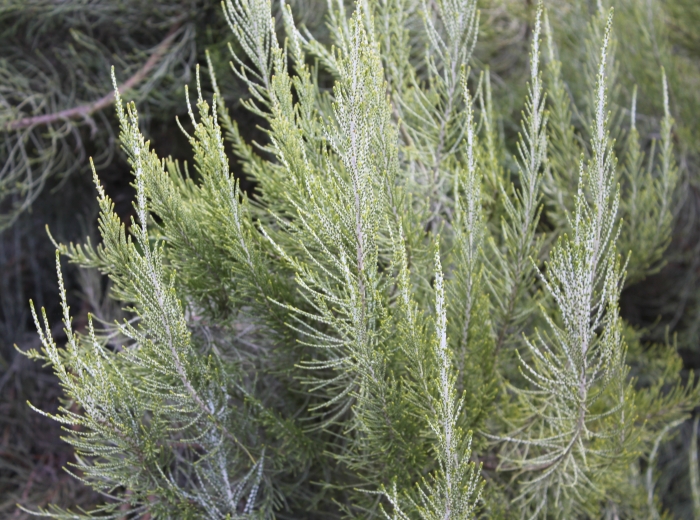Renosterbos
(Elytropappus rhinocerotis)
Renosterbos (Elytropappus rhinocerotis)
/
/

Abu Shawka
Public domain
Image By:
Abu Shawka
Recorded By:
Copyright:
Public domain
Copyright Notice:
Photo by: Abu Shawka | License Type: Public domain | License URL: https://creativecommons.org/public-domain/ | Uploader: Abu Shawka | Publisher: Wikimedia Commons | Title: Elytropappus_rhinocerotis_-_Renosterbos_-_Cape_Town_1.jpg | Notes: {{BotMoveToCommons|en.wikipedia|year={{subst:CURRENTYEAR}}|month={{subst:CURRENTMONTHNAME}}|day={{subst:CURRENTDAY}}}} {{Information |Description={{en|Full picture of medium sized [[:en:Wheki]] ''Dicksonia squarrosa'' fern}} |Source=Tran





















































Estimated Native Range
Summary
Elytropappus rhinocerotis, commonly known as renosterbos or "rhinoceros bush," is a perennial shrub native to the fynbos and renosterveld vegetation types within the Cape Floristic Region of South Africa. It typically grows to a height of 3-8 feet (0.9-2.4 meters) and a width of 2-5 feet (0.6-1.5 meters). Renosterbos is characterized by its fine, needle-like gray-green leaves and small, purple flower heads that appear in late summer to autumn. The plant’s overall appearance is dense and bushy, with a somewhat rounded form. It is not particularly known for showy flowers, but its foliage and form provide a unique texture in the landscape.
Renosterbos is valued for its adaptability to poor soils and its drought tolerance, making it a suitable choice for xeriscaping and water-wise gardens. It is often used in South African native plant gardens, wildlife gardens, and for habitat restoration, where it provides cover and food for local fauna. In cultivation, it thrives in full sun and requires minimal water once established, preferring well-drained soils. While it is not commonly affected by diseases, it can be susceptible to root rot in poorly drained conditions. The white-flowered cultivar offers a striking contrast and is preferred for ornamental use over the direct species. Renosterbos is also noted for its historical use in traditional medicine and as a source of tannin.CC BY-SA 4.0
Renosterbos is valued for its adaptability to poor soils and its drought tolerance, making it a suitable choice for xeriscaping and water-wise gardens. It is often used in South African native plant gardens, wildlife gardens, and for habitat restoration, where it provides cover and food for local fauna. In cultivation, it thrives in full sun and requires minimal water once established, preferring well-drained soils. While it is not commonly affected by diseases, it can be susceptible to root rot in poorly drained conditions. The white-flowered cultivar offers a striking contrast and is preferred for ornamental use over the direct species. Renosterbos is also noted for its historical use in traditional medicine and as a source of tannin.CC BY-SA 4.0
Plant Description
- Plant Type: Shrub
- Height: 3-8 feet
- Width: 2-5 feet
- Growth Rate: Moderate
- Flower Color: N/A
- Flowering Season: Winter
- Leaf Retention: Evergreen
Growth Requirements
- Sun: Full Sun
- Water: Low
- Drainage: Fast
Common Uses
Drought Tolerant, Low Maintenance
Natural Habitat
Native to the fynbos and renosterveld vegetation types within the Cape Floristic Region of South Africa
Other Names
Common Names: Renosterbos
Scientific Names: , Elytropappus rhinocerotis, Dicerothamnus rhinocerotis, Stoebe rhinocerotis, Helichrysum rhinocerotis, Seriphium adpressum, Stoebe adpressa, Stoebe cupressina, Elytropappus cernuus, Seriphium cernuum
GBIF Accepted Name: Dicerothamnus rhinocerotis (L.fil.) Koek.